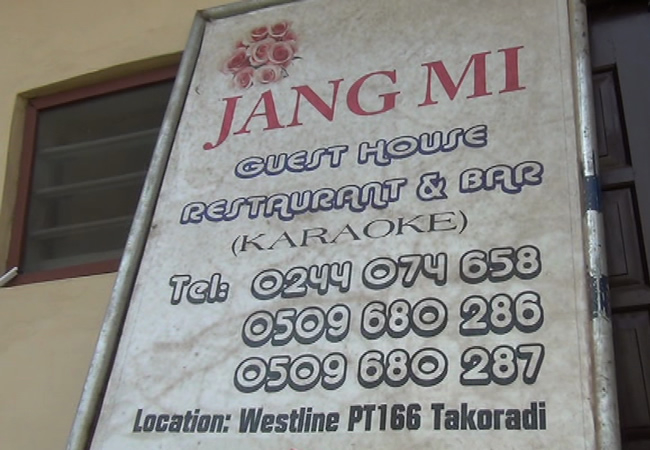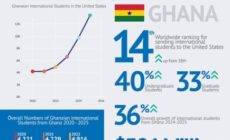Anas Aremeyaw Anas’ report: Huge sums of money shipped from Ghana to Asia
- Posted on
- Comment
 The New Crusading GUIDE’s investigations into the trafficking of young Vietnamese girls into Ghana have uncovered a complex web of money laundering transaction running from Ghana to Asia from the sex trade.
The New Crusading GUIDE’s investigations into the trafficking of young Vietnamese girls into Ghana have uncovered a complex web of money laundering transaction running from Ghana to Asia from the sex trade.
The Financial Intelligence Unit of Ghana are already on the heels of the traffickers and their network used for laundering money made from the sexual exploitation of the Vietnamese girls.
In the ‘Chinese Sex Mafia’ story of 2009, the Chinese traffickers were keeping money realized from the sexual enslavement of their fellow nationals and sending some through unidentified networks. We could not crack that aspect of the story due to its complexity at that time.
In the recent Takoradi raid however, we had financial records of monetary transactions. These financial records were usually remittances which were the primary source of outgoing financial transactions.
The team also found evidence of accounts belonging to the traffickers opened in a local bank (name withheld). There were also Chinese bank credit cards in respect of each of the six victims.
From the records we have, all remittances were sent by the traffickers usually to China. Amounts sent ranged from between 3,000 to 5,000 Ghana cedis, equivalent of between $1,200 and $2,000 per transaction, and many of such transactions have gone on over the past months.
We have reliable information of how a top local bank (name withheld) was used by the traffickers. A young Ghanaian man was also used as the conduit through which the funds were laundered out.
During the raid at the Jang Mi Guest House, cash exhibits that we found were in both local and foreign currencies. The exhibits are currently with the police.

Financial Intelligence Unit of Ghana zooms In
Information we have gathered shows that the necessary authorities have contacted the Financial Intelligence Unit (FIU) to help trail the course of all the remitted cash.
We are reliably informed that the FIU is leaving no stone unturned; ready to resort to legal procedures where necessary to nab the kingpin. If successful, the particular accounts would be frozen.
Given the international nature of trafficking, a cross boarder collaborative strategy is in the pipeline to identify the last withdrawals of remittances that were sent by the two accused traffickers in the case of the recent swoop in Takoradi; Hwang Se Hui and Cz Tian Ping.
According to a senior Member of the House of Lords, Madam Mary Goudie; “Modern – day slavery is an underground business, intrinsically linked to global supply chains. Individuals and companies are making a huge amount of money out of this business and can make it extremely hard for campaigners and governments to chase the cash back to its true sources.”
Statistics from the International Labour Organization (ILO) indicates that; the annual monetary return on slavery is over 32 billion dollars. The envy of many multinational companies the world over.
It is monies like the $100 per hour that is charged for the services of the rescued Vietnamese girls that aggregate to become that huge figure that goes into the chest of traffickers the world over.
Why follow the money trail in the Takoradi raid?
The convention in reporting and seeking to combat trafficking cases over the years has been to identify cases, move in to rescue victims and arrest traffickers; pursue prosecution and close the chapter.
So more often than not, the immediate trafficker who is picked up by the security agencies during swoops and it ends there. The truth however is that; they also have superiors whose trail may not be easy to track; as is currently the case with the kingpin in the recent raid of Jang Mi Guest House in Takoradi.
Arresting and prosecuting just one trafficker has been seen as insufficient if not inimical to efforts at making significant strides in the global fight against human trafficking i.e. modern – day slavery.
In recent times, there has been the need to go beyond the trafficker, and to find the person (s) who monies gotten from the trafficking trade at the local level eventually are laundered to; that is finding the final beneficiary of trafficked funds.
A similarity in respect of the latest story vis-à-vis the Chinese Sex Mafia published in 2009 reveals that currencies, local and foreign; exchange hands in the course of trafficking. In the Takoradi story, we found forex and proof of remittances as earlier alluded to.
The remittances put the spotlight on the extent to which even the conventional and formal financial institutions (i.e. banks) could be used subtly to facilitate this illegal trade. Trailing the monies accruing from trafficking is seen as stepping up the quest to put an end to the global scourge called modern – day slavery.
The trafficking problem is especially scary in Asia which accounts for a whopping 50% (i.e. 10.5 million) of the 21 million persons trafficked globally.

The main story headlined ‘Trafficked and Abused,’ published in the Wednesday, March 12, 2014 edition of the New Crusading GUIDE was about how six Vietnamese girls were lured from their native country under the pretext of landing well paying jobs in the United States of America.
Our undercover reporter posed as a client who worked with an oil firm and in the process got hard core evidence of how these Vietnamese ladies were being sexually exploited under repressive conditions.
That information resulted in a raid that led to the rescuing of the girls and arrest of their Chinese slave masters who charged clients between $100 and $500 for the services of the girls.
Meanwhile, the search for the kingpin in the Chinese trafficking ring is still on and readers would be updated duly.
Stay tuned for the third part of this story in which we tell a vivid account of the human rights abuses that these girls suffered whiles under sexual enslavement.
Anas Aremeyaw Anas reports from Accra, Ghana










 (Selorm) |
(Selorm) |  (Nana Kwesi)
(Nana Kwesi)